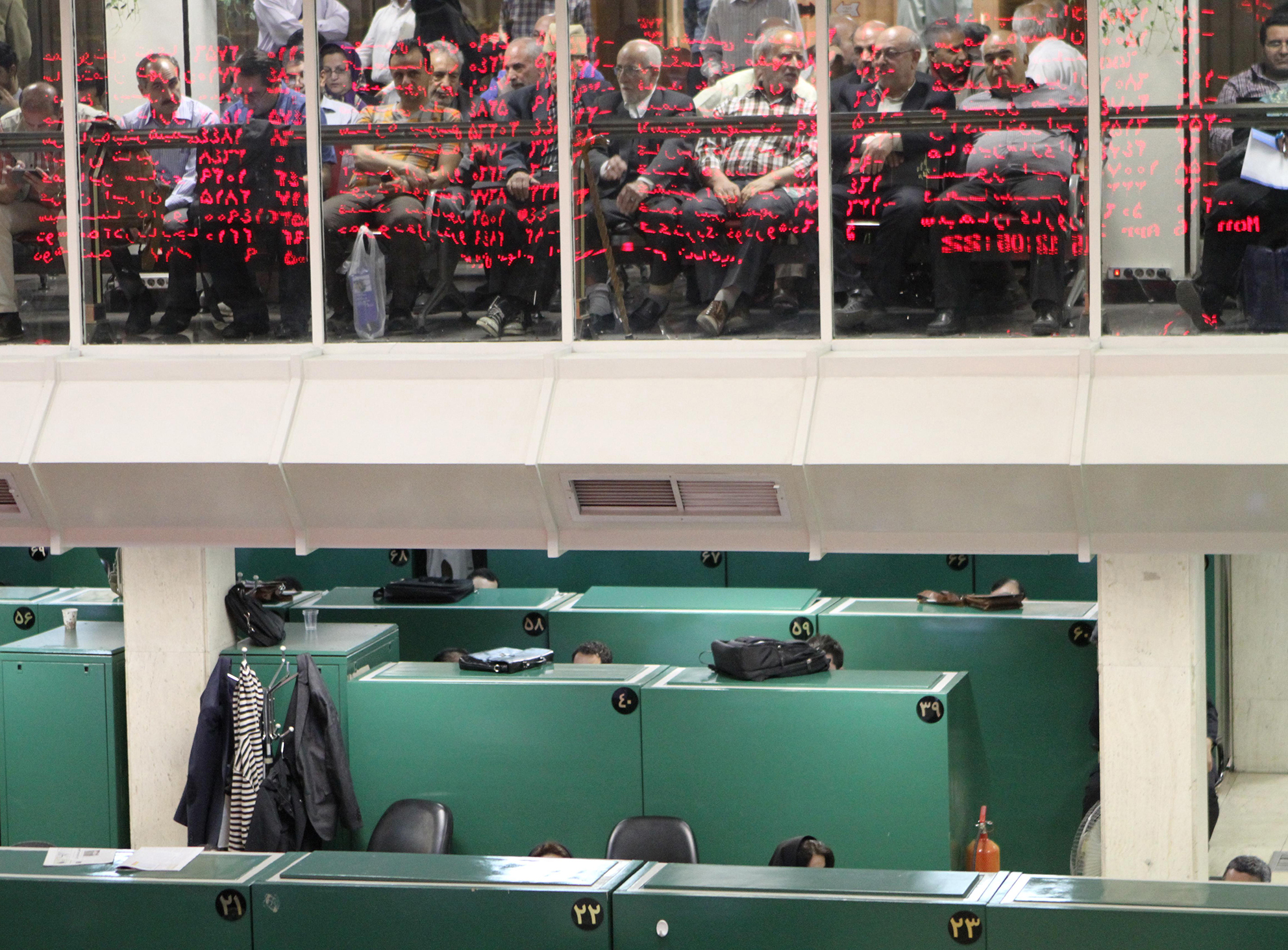The initial enthusiasm in Iran’s capital market following the reelection of President Hassan Rouhani in late May has faded and the market has been on a downtrend ever since.
Tehran Stock Exchange’s main index lost 633 points or 0.8% during the week that ended May 31 to close at 80,513. The smaller over-the-counter Iran Fara Bourse’s benchmark, IFX, also shed 10.6 points or 1.1% to 916.
The final results of Iran’s presidential election were out on May 20, with the incumbent Rouhani winning 57% of the vote. Stocks reacted favorably and reached new highs.
TEDPIX shot up 0.91% to reach a six-month high of 81,077.6 and IFX surged 1.28% to an all-time high of 927.31.
The dramatic growth, however, was seen by most experts as a short-term excitement and destined to an early price correction, as it was not backed by any real economic factor.
Other than the correction factor, various market dynamics were in play to bring about the ensuing rout over the past week. Firstly, stocks entered the holy month of Ramadan just a week after the elections. The month is widely known to be a period of reduced productivity and consequently subdued investor sentiment in the market.
The Central Bank of Iran’s new initiative to limit banks and credit institutions’ activities in the market coupled with sliding oil prices were among other contributing factors.
CBI Gets Tougher on Banks
Article 16 of the Law on Removing Barriers to Production, ratified in 2015, dictates that all banks and credit institutions and their subsidiary companies are mandated to sell off their shares in businesses regarded as “non-banking activities”.
According to the law, the banks have until March 2018 to implement the measure.
CBI’s latest move was to amend the law to put further pressure on banks. Ratified in 18 articles last month and announced just a week ago, the amendment primarily stipulates that credit institutions dabbling in investment funds is an instance of non-banking activities.
Moreover, credit institutions’ total investments are limited to 20% of their total capital.
According to CBI, the measures are meant to limit the risks and increase supervision over credit institutions’ investment practices, leading them toward their original task of functioning as “financial intermediaries”.
“From CBI’s point of view, the lenders’ main job is to act as financial intermediaries,” says CBI’s deputy for supervisory affairs, Farshad Heydari.
“This means that after mobilizing the resources, the banks must distribute the funds among businesses and loan applicants.”
From running multiple affiliate companies to owning sports teams and making big-time real-estate investments, banks have become mired in a myriad of business projects that bear no resemblance to their original mission of channeling funds between lenders and borrowers.
The new measure is supposed to address the banks’ assets locked in unprofitable schemes and the persistence of cash shortage in production units.
For the equity market, however, the scheme will not have a positive effect in the short run.
“The financing of Iran’s equity market mostly takes place through the money market, therefore such limitations are bound to obstruct the equity market’s trusted method of financing,” managing director of Novin Investment Bank, Vali Nadiqomi, was quoted as saying by Jahan-e Sanat daily.
Accordingly, the dampened investor sentiment is mostly due to the uncertainty surrounding the liquidity flow in the market as well as the investment funds’ performance and ownership.
Oil Takes a Beating
Late last year, the Organization of Petroleum Exporting Countries agreed to cut production by 1.2 million barrels a day to reduce a supply glut. At first, the move lifted global prices, but much of those gains have been erased by rising output from the United States and Libya. The program of cuts has been extended to next March.
Oil took a beating last week by dropping more than 4%, the largest weekly decline since early May.
Sentiment deteriorated further after data from industry group Baker Hughes on Friday showed US oil drillers adding 11 more active rigs in the week ended June 2. That marked a 20th consecutive weekly rise.
US crude production has averaged more than 9.3 million barrels a day for four straight weeks. The government now expects production to reach nearly 10 million barrels a day next year, Market Watch reported.
The head of Russia’s largest oil producer, Rosneft, doubted that the OPEC cuts would lift oil prices in the long run. He said producers not included in the reduction pact, like Nigeria and Libya, have been actively increasing output.
“A number of large-scale oil producers that do not take part in these agreements use such conditions to strengthen their market positions and that leads rather to new imbalance than to sustainable development,” said Rosneft Chief Executive Igor Sechin also told an energy conference in Russia over the weekend.
TSE, IFB Weekly Report
Over 2.82 billion shares valued at $191.73 million were traded on TSE during the week that ended May 31. The number of traded shares and trade value shrank by 46% and 59% compared to the previous week.
TSE’s First Market Index shed 451 points or 0.8% to end at 55,559.
The Second Market Index dropped 1,334 points or 0.73% to close at 180,238.
At IFB, more than 1.65 billion securities valued at $180.97 million were traded. The number of traded shares and weekly trade value shrank by 40% and 19% respectively compared to the previous week.
IFB’s market cap lost $323.05 million or 1.1% to reach $28.48 billion.
Its First Market witnessed the trading of 224 million securities valued at $15.05 million, indicating a 44% and 43% upturn in the number of traded securities and trade value respectively.
About 486 million securities valued at $34.23 million were traded in the Second Market, with the number of traded securities growing by 4% while trade value was down by 47% week-on-week.



